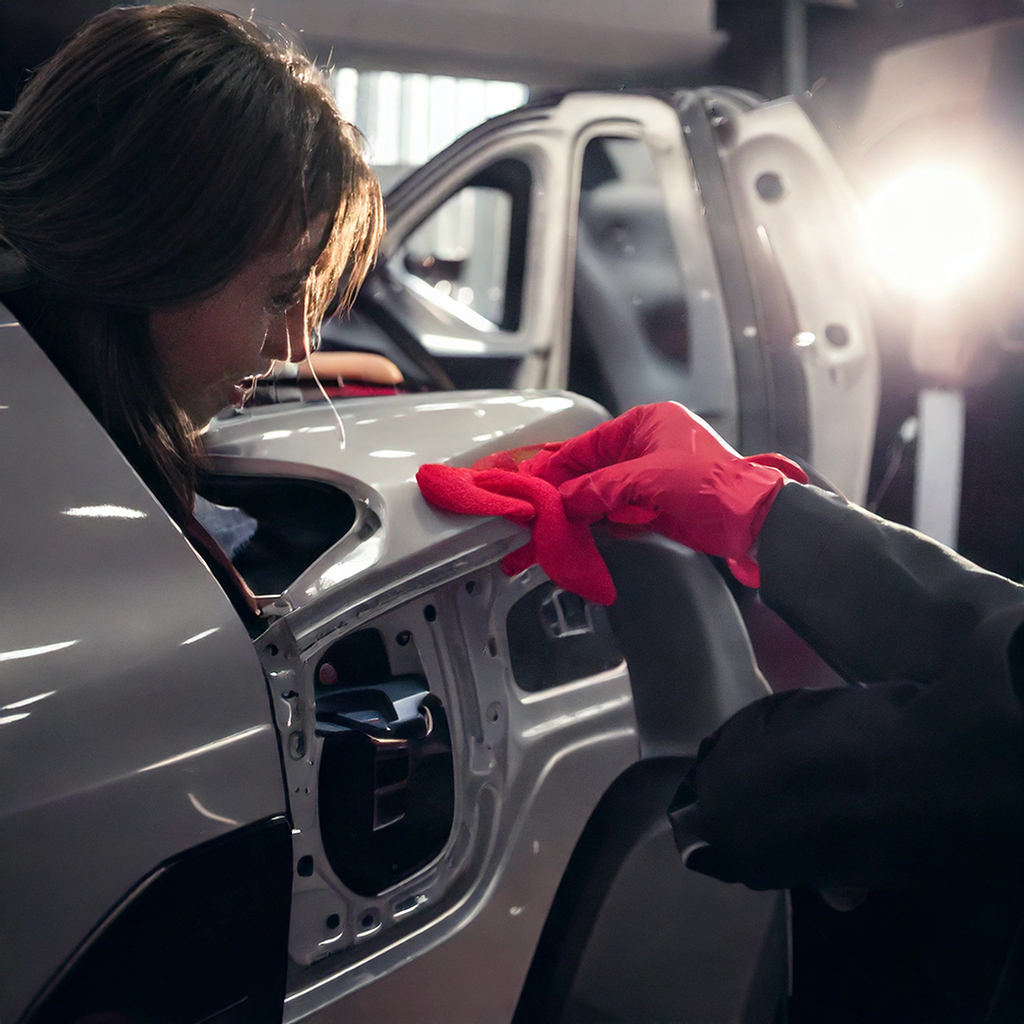The Origins of PDR
Paintless Dent Removal may seem like a modern innovation, but its roots trace back to the 1930s when workers in automotive manufacturing plants needed efficient ways to fix dents that occurred during production. The technique was reportedly refined in the 1960s by Oskar Flaig, a staff member at Mercedes-Benz, who used the technique at international trade shows to keep the displayed vehicles in pristine condition overnight after visitors inevitably left fingerprints and small dents on the cars.
From Factory Floor to Mainstream Service
For decades, PDR remained primarily an insider technique used by manufacturers. It wasn’t until the 1980s that the method began to gain traction as a commercial service offered to consumers. Early pioneers had to develop their own tools and techniques, often guarding their methods as closely held trade secrets.
Technological Advancements
The PDR industry has seen significant advancements over the years:
Tools: Early PDR technicians worked with handmade tools adapted from household items. Today’s professionals use specialized rods, light boards, glue pulling systems, and even LED-lined reflector boards that help technicians see the most minute imperfections.
Training: What was once learned through apprenticeship alone can now be supplemented with formal training programs, certification courses, and industry associations that establish standards of practice.
Techniques: Modern PDR includes various approaches like push-to-paint, glue pulling, and blend hammering—each appropriate for different types of damage and locations.
PDR in the Modern Era
Today’s PDR industry has evolved to address increasingly complex repairs. Modern technicians can repair dents that would have been considered impossible just a decade ago. The introduction of aluminum body panels in luxury and high-performance vehicles has pushed PDR specialists to develop new techniques specific to these more challenging materials.
Industry Recognition
Insurance companies now widely recognize PDR as a preferred repair method for qualified damage, acknowledging its cost-effectiveness and quality results. Many policies specifically cover PDR services, particularly for hail damage in storm-prone regions.
The Future of PDR
As vehicle manufacturing continues to evolve with new materials and construction techniques, PDR is adapting alongside it. Technicians are developing specialized approaches for carbon fiber panels, ultra-high-strength steel, and other modern materials.
At Dent Doctor, we stay at the forefront of these developments, continuously updating our techniques and tools to provide the best possible service for any vehicle that comes through our doors. Our technicians receive ongoing education to master the latest advancements in the field.
The evolution of Paintless Dent Removal represents a perfect blend of artisanal skill and technical innovation—a combination that continues to provide vehicle owners with a superior repair option that preserves both appearance and value.






